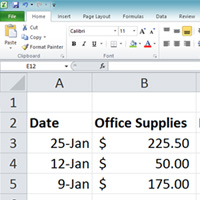Category: Taxes
-

Amazon: Is it the right way to grow your business?
I don’t believe there is one sure-fire method to growing your business. What worked for one person to grow a business may not work for you or me. A system to grow your business to XX dollars in XX time is a system that worked for that person with certain education, experiences, and personality. Will…
-
Save Money By Filing Your Tax Return on Time
Tax day approaches. For individuals and businesses who follow the calendar year, your tax return is due by April 15, 2015. It is true you can request an extension to delay filing your taxes. Here’s why you should file your tax return by April 15: File Your Taxes Now and Know What Changes to Make…
-
Estimated Tax Payments Made Easy
Since estimated tax payments sent through the mail include your tax ID number, they can put your business at risk. Why mail your estimated tax payments to the IRS when there’s an easier – and safer – way? Register your business at www.EFTPS.gov to make tax payments easily and securely. If you are a sole…
-

Using your personal vehicle for your business
One of the most commonly asked questions I get is regarding the business use of a personally owned vehicle. There are several ways this can be treated on your tax return and I don’t really want to get into all that. What I do want to help you do is track the right information to…
-

The Secret to Receiving that Big Tax Refund
This is the time of year when dozens of articles are published purporting to have the secret to receiving that big tax refund. Some of the articles make it sound like tax professionals are hiding the answer from you. I’m sorry to say there is no “easy” button when it comes to that big tax…